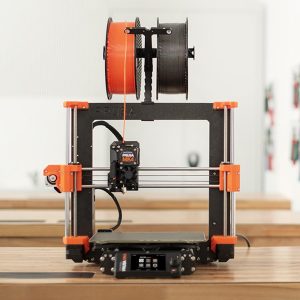3D Printer – Buyer’s Guide

Ready to dive into the world of 3D printing? Whether you’re a hobbyist, artist, engineer, or educator, there’s a 3D printer out there that’s perfect for you.
But with so many options on the market, choosing the right one can be overwhelming. Don’t worry, this ultimate buying guide will help you find the best 3D printer for your needs.
What to look for when buying a 3d printer:
Your use-case (for school or for work), budget, and specs like resolution and build volume.
What Do You Need to Print?
Before you start shopping for a 3D printer, consider what you want to create. Are you looking to print small, detailed objects or larger, more functional parts? Your printing goals will help determine the type of printer and materials you need.
Types of 3D Printers
There are several types of 3D printers available, each with its own strengths and weaknesses:
FDM (Fused Deposition Modeling) Printers
- Most common and affordable
- Use filament materials like PLA and ABS
- Great for hobbyists and beginners
SLA (Stereolithography) Printers
- Use liquid resin and UV light to create highly detailed prints
- More expensive than FDM printers
- Ideal for jewelry, dental, and other precision applications
Other Printer Types
- SLS (Selective Laser Sintering): Uses powdered materials; great for functional parts
- DLP (Digital Light Processing): Similar to SLA but uses a digital projector; faster printing
- SLM (Selective Laser Melting): Uses metal powders; ideal for industrial applications
Understanding 3D Printing Materials
Filament
- Used in FDM printers
- Common types: PLA, ABS, PETG, TPU
- Varying properties: strength, flexibility, temperature resistance
Resin
- Used in SLA and DLP printers
- Produces highly detailed, smooth prints
- Can be brittle and require post-processing
3D Printer Specifications to Consider
Resolution
- Determines print quality and detail
- Look for printers with a minimum layer height of 100 microns or less
Print Speed
- Affects how quickly you can produce prints
- Faster speeds may sacrifice some print quality
Build Volume
- The maximum size of objects you can print
- Larger build volumes generally mean higher prices
Supported Materials
- Some printers only work with specific materials
- Consider the properties and cost of the materials you plan to use
Who Will Benefit Most from a 3D Printer?
3D printers are incredibly versatile tools that can benefit a wide range of people, including:
- Hobbyists and DIY enthusiasts who want to create custom parts and designs
- Artists and designers who want to bring their digital creations to life
- Engineers and product designers who need to create prototypes and test fits
- Educators and students who want to learn about 3D printing and design
No matter who you are or what you want to create, there’s a 3D printer out there that can help you bring your ideas to life. By considering your printing needs, budget, and the key specifications outlined in this guide, you’ll be well on your way to finding the perfect 3D printer for you.
